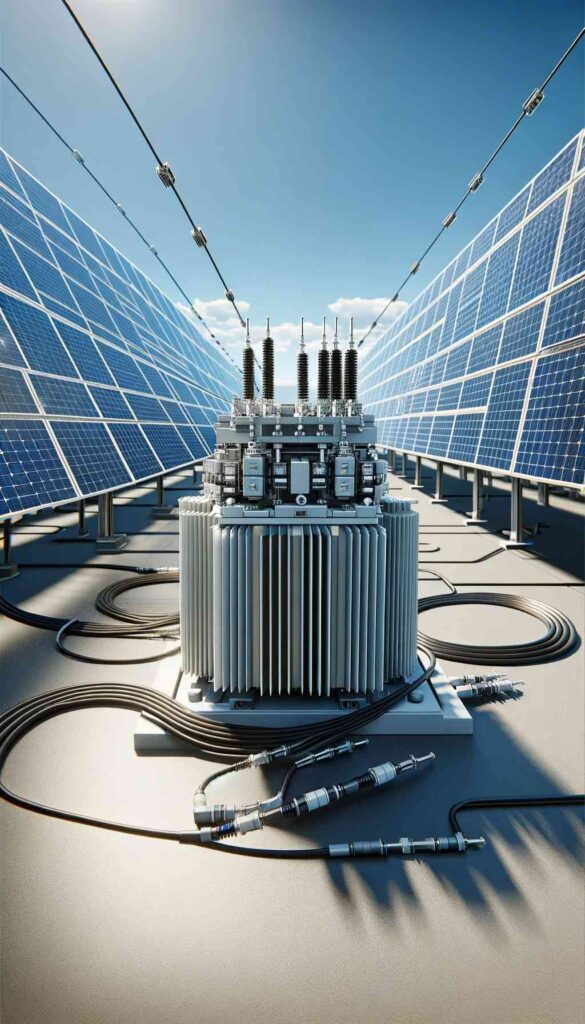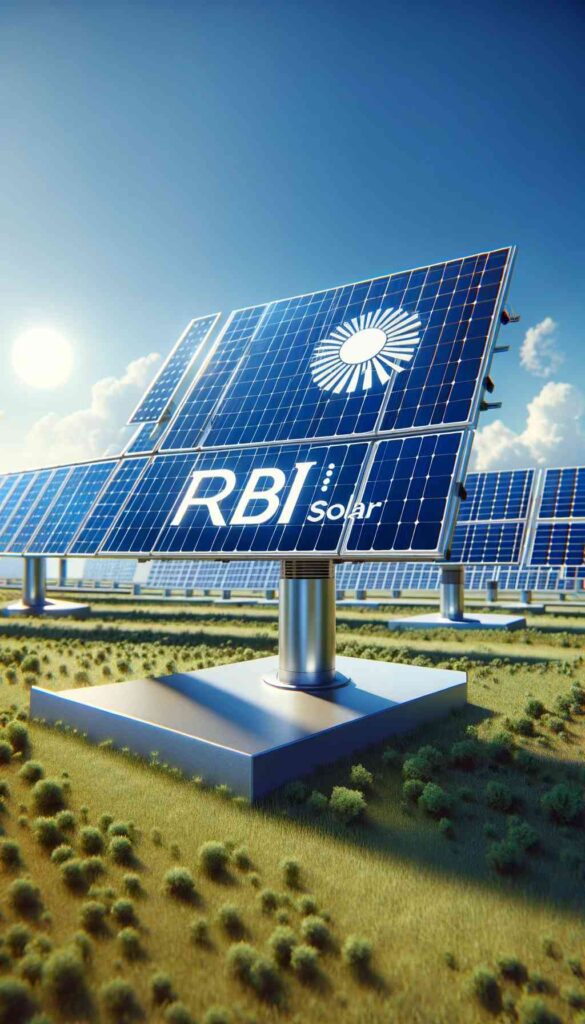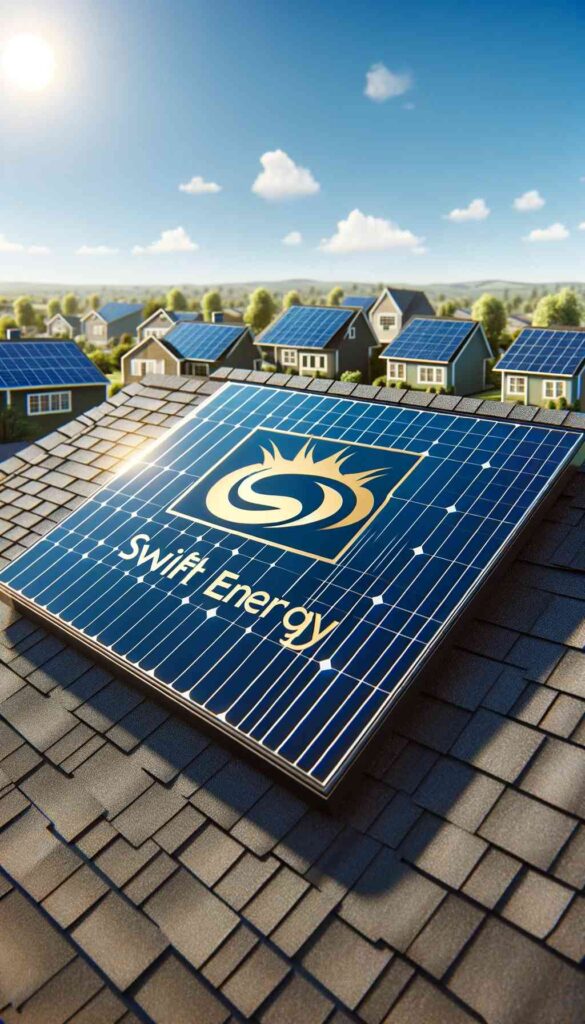Picture this: You’re out in the sun, feeling the warmth on your skin. You know that’s energy right? And imagine, just for a minute, that you could take that sun-soaking energy and use it to power up your laptop, charge your phone or even light up your house. Well, hello solar transformer! Our little unsung hero in the world of sustainable energy.
Understanding the Basics of Solar Energy
Picture a world where all our energy comes from one giant fireball in the sky – the sun. We’re talking solar energy, baby! It’s not some crazy sci-fi concept; it’s happening right now. Solar energy is simply taking the light and heat emitted by our favorite star (hey, Sun!) and converting it into usable power to run all sorts of fun things.
Working Principle of a Solar Transformer
Now, you may be asking yourself ‘Where does this solar transformer fit into all of this?’ Good question! Simply put, the solar transformer is like the middle-man in this solar system affair. When the sunlight turns into electricity via photovoltaic cells (stay with us), it’s not ready to be used yet – think of it as untamed sunlight dancing around.
The transformer steps in here like a nature taming cowpoke at an unruly rodeo; corralling this electricity and turning it into an energy format we can actually use in our homes. Now isn’t that neat?
Role of Capacitors and Diodes in Energy Conversion
We can’t forget about our trusty companions though – capacitors and diodes – who are sitting on the back bench but play pivotal roles. To use a slightly nerdy analogy, they are like the translator at a multi-language conference. They help ensure there’s smooth communication between our dancer sunlight and our home’s electrical system, making sure no significant message gets lost or misinterpreted along the way.
Role of the Solar Inverter
In this relay race of energy conversion, there’s another important player – the solar inverter. Think of it as the talented orchestra conductor of your solar power symphony. It converts the direct current (DC) – that’s the stuff from your PV panels – into alternating current (AC)- that’s what’s powering your Netflix binges on those rainy days.
Understanding Photovoltaics (PV)
If this all sounds like a magical process, it kind of is. This magic is all thanks to photovoltaics or PV in short. The very term photovoltaic comes with a promise: ‘photo’ meaning light and ‘voltaic’ implying electricity – you get where this is heading, right? Photovoltaic cells harness light (sun’s rays) and turn it into electricity—now that’s some dazzling solar magic!
Importance of a Transformer in the PV System
You’re already aware that our dear transformer plays some role in all this – but how exactly does it fit with photovoltaics? Well, once those sunrays have been turned into electricity by your PV cells, that power is pretty raw and wild—as wild as a disco night in the 70s.
The transformer jumps back into the picture here and smooths things out. It takes the raw power and tunes it to just the right voltage for your home’s electrical grid—ensuring you get to enjoy a sunny-side-up day even on gloomy afternoons!
The Types of Solar Transformers
So, we’ve talked about this gem called the solar transformer – but did you know there’s more than one type? Just like the best ice-cream spots in town have different flavors, there are several types of solar transformers to match with your specific needs. Whether it’s single-phase for residential usage or a sturdy three-phase for industrial settings, there’s always a solar transformer that fits the bill!
Impact of Transformer-less Designs on System Efficiency and Feasibility
A bit of a plot twist here – while transformers are great and all, did you know some systems opt to go ‘transformer-less’? Less might indeed be more! While such tech might sound like something straight out of Doctor Who, it’s an innovative move to boost PV system efficiency. But do remember, with no transformers at the helm, proper care is needed to ensure safety standards stay up to par!
The Power Electronic Transformation Process
We can’t talk about transforming sunlight into electricity without dipping our feet into some ‘power electronics’. I know, the term sounds intimidating like trying to assemble IKEA furniture without the manual. But let me break it down: think of it as a language conversion process for energy where power from the photovoltaic cells gets transported in a format our homes can use effectively. The benefit? An uninterrupted supply of ‘sunny’ electricity for your home.
Grid-Tied Systems vs Off-Grid Systems
Up next on our solar power journey is learning about Grid-tied and Off-grid systems. Imagine being at a party – Grid-tied systems are those extroverts who love being connected with others (in this case, tied to your local utility grid), while Off-grid systems are the introverts preferring their solo time (completely independent of utility grids). Both have their perks—now you just have to choose your vibe!
Step-Up vs Step-Down Transformers in PV systems
Gone are the days when ‘step up’ and ‘step down’ were only dance move instructions. In our solar brigade, step-up transformers grab the timid, low-voltage power by its hand and boost its energy up to match the grid levels. On the contrary, step-down transformers help mellow down your high-energy friend here to a calm and composed low-voltage state. Both crucial dance moves when it comes to dancing with solar energy!
Evaluation of Solar Transformers Efficiency
We’re all about efficiency these days – multi-tasking humans, fast-loading apps, and supremely efficient solar transformers. Though they might not help juggle your work emails while basting a turkey for dinner, solar transformers are great at ensuring you get maximum energy output from your photovoltaic setup. Regular health-check-ups (read: efficiency evaluations) help keep up that A-game!
Transformer Temperature Impact on Overall System Performance
Lastly, never underestimate the dramatic effect of temperature, be it on your favourite ice cream cone or a hardworking solar transformer. Just as too much sun can make or break that perfectly scooped gelato, high heat in your transformer can impact system performance —all the more reason to ensure optimal temperature control.
Risks And Challenges Involved in Solar Transformer Systems
Let’s be honest, though. Just like trying a new, daring hair color: while fantastic, it does come with some risks and challenges. Fluctuating temperatures, correct installations, and understanding the right type of transformer can be tricky business. But hey, no successful adventure is without a few hurdles to jump over, right?
Regulation and Standardization of Solar Transformers
One comforting aspect is – you’re not alone navigating through this solar journey! Just like traffic rules that provide guidance on the roads, the world of solar transformers has its standards and regulations to ensure nothing gets haywire. International norms are there to assure safety in harnessing sun power – keeping all the brilliant advantages while reducing any pesky risks.
Current Trends in Solar Transformers and PV systems
Now that we’re all buddies with solar transformers, let’s dip our toes in the ‘newfangled trends pool’. With clean energy becoming ultra-popular (as it should), solar transformers are also constantly evolving. We’re talking about things like machine learning for efficient energy usage predictions — it’s all getting very ‘Back To The Future’ out there!
How Does a Solar Transformer Contribute to Utilizing Solar Energy for Heating?
One of the key components in harnessing solar energy for heating is a solar transformer. With the help of a solar transformer, individuals can experience warmth with a sunheat heater by efficiently converting solar energy into usable electric power. This essential device enables the utilization of sustainable energy for heating purposes, reducing reliance on conventional heating methods and contributing to a greener future.
Case Study Examples of Effective Energy Conversion through Transformers
All this talk might seem theoretical until you see it happening around you. There are amazing real-life examples where people have harnessed solar power effectively via these wonderful transformers – from powering remote villages in less developed countries to running entire towns in sunny California! Ready to join this ‘sunny-side’ up revolution?
The Environmental Impact Of Using Solar Transformers
Last but not least – let’s not forget one of the coolest parts of this whole solar deal. It’s green! It’s clean! Using solar transformers, you’re setting a powerful example by choosing one of the most eco-friendly energy sources available. And the cherry on top? Besides saving on that pesky electricity bill, you’re doing your part in reducing harmful emissions. How’s that for being a hero?
Conclusion
So there you have it – the exciting world of solar transformers and energy conversion. Isn’t it amazing to think you can harvest the immense power of that big old ball of fire up in our sky? With a little help from photovoltaics and our trusty transformers, we’re turning nature’s sunlight into something we use each day – powering our lives while caring for our planet. Solar energy really does let us have our cake and eat it too!


